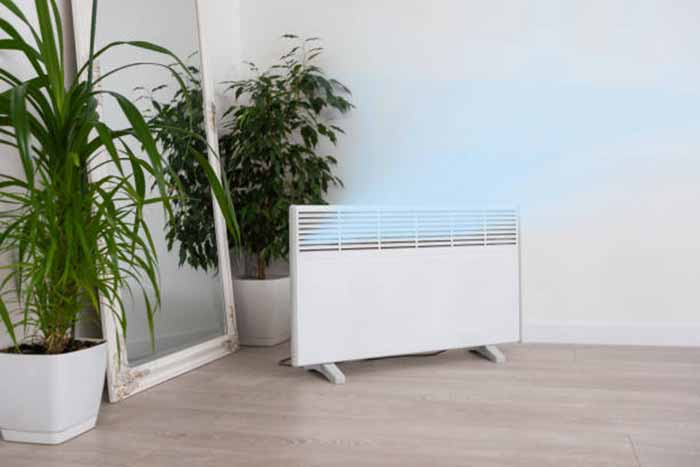Infrared Heaters are a great option for heating smaller spaces and areas where central heating isn’t feasible. They also help to cut down on energy costs and reduce the risk of carbon emissions.
Infrared heaters work by emitting radiation which travels through the air, absorbing heat directly from objects and people in front of them. This means you don’t lose any warmth through draughts and you can keep your property warmer from floor to ceiling.
Energy Efficiency

Infrared heating is a safe and energy-efficient way to heat your home. It uses infrared radiation to warm objects or people directly, which is a lot more energy efficient than warming the air around them with convection heating methods.
Another advantage of infrared heaters is that they don’t circulate the heated air and therefore don’t waste energy warming the air that doesn’t need to be warmed, which is a big savings on your electricity bill.
Besides, infrared heaters don’t cause dust to collect on the walls or ceilings as traditional radiators do, which can be a huge health benefit for those with asthma and allergies, Navigate to this website.
Infrared panel heaters are a popular choice among shoppers, especially those looking to warm a room without using much power. They come in different sizes and can be installed anywhere on a wall or ceiling.
Safety
Many infrared heaters feature safety features, including tip-over and overheat protection. They also usually have a thermostat that adapts the heating output according to your room’s temperature.
Infrared heaters are much safer than conventional convection space heaters. They do not burn fuel, which means they do not emit harmful compounds into the air and can help improve indoor air quality.
Another benefit of infrared is that they do not create air flows within a house that carry dust, pollen and allergens around the room. This reduces the impact on your family’s health.
Some larger infrared heaters can use a lot of electricity, so it’s a good idea to check your electric box and make sure you’re not overloading the grid. Some infrared heaters even come with a mode that limits the amount of power they draw, which can be useful in smaller homes.
Design
Unlike convection heaters, which heat the air around them, infrared heaters directly warm objects. This feature allows them to heat large spaces quickly and evenly.
Infrared heating works by producing electromagnetic waves, which travel through the infrared spectrum. There are three types of infrared waves: shortwave, mid-wave, and long-wave.
As the wavelengths get shorter, the energy radiated decreases. This makes long-wave infrared more efficient for transferring heat, but shortwaves can be too hot for indoor applications.
When designing radiant heaters, one must consider rate and performance criteria, as well as the acoustical and visual environment in the room. As with all building design issues, it is critical to ensure that the radiant footprint of an infrared tube heater does not overpower the building’s overall heat loss.
In addition, it is essential to place the emitter tube so that it sees the maximum floor area possible. This will maximize efficiency, while avoiding the risk of reaching flue gas dew point and reducing the end-to-end temperature differential.
Installation
Infrared panels work best when they’re free of obstructions, so avoid installing them too close to objects such as doors or room corners. These can block the panel’s path to efficient heating, limiting the energy it can absorb and causing excess heat to build up behind it, which could damage the appliance or void your warranty.
Positioning becomes an easy matter of common sense when you understand how infrared heaters work. They radiate far infrared heat through the air, which is absorbed and bounced off objects within the room, before being reflected back to the opposite side of the wall or ceiling.
Conclusion:
Ceiling installation is another popular choice, as it provides an unhindered spread of warmth and keeps wall spaces free – it’s the ultimate space-saver. Plus, ceilings are usually free of angular or awkward nooks and crannies so infrared panels can be placed at just the right height to provide optimal heating at ground-level.

